|
It's New Year and we here at Selfishgenie Publishing are taking a well earned break.
But don't worry, our blog will be returning on Saturday 7th January 2023, so watch our socials for information on what we will be blogging about. In the meantime, we would like to wish you a very Happy 2023. And don't forget, books published by Selfishgenie are a great way to use those Amazon vouchers you got for Christmas.
0 Comments
It's Christmas and we here at Selfishgenie Publishing are taking a well earned break.
But don't worry, our blog will be returning on Saturday 7th January 2023, so watch our socials for information on what we will be blogging about. In the meantime, we would like to wish you a very Merry Christmas and a Happy New Year. And don't forget, books published by Selfishgenie are a great way to use those Amazon vouchers you got for Christmas. In this last blog before the Christmas holidays, we've handed it over to one of our authors to get her take on one of the stories from Christmas. All views expressed are those of the author and aren't necessarily those of Selfishgenie Publishing. Note: This is a work of fiction.  The first Christmas Day - a hillside near Bethlehem - night has fallen. “It’s a cold one tonight, alright.” Dave said as he returned from checking what the sheep were up to out on the side of the hill. He stretched his hands towards the fire and rubbed them to restore his circulation. He saw that the food was cooked and took a piece, savouring its delicate musty flavour. “You’re not wrong there.” Another Dave replied. “If it gets any colder I’ll have to wrap a fleece around my shoulders.” “Shhhh!” A different Dave hissed, pointing towards the sheep. “If they hear you say that they’ll get upset. You know how easily upset they get and seeing your drape the skin of one of their half brothers around you will get them in a really bad mood.” “Sorry, wasn’t thinking.” Another Dave apologised. He popped a morsel of food into his mouth. “Hey!” The first Dave said, pointing towards the sky. “What’s that bright light?” “Where?” A different Dave replied, searching the heavens, but looking in entirely the wrong direction.  “There, you idiot! Over there, near where that bright star’s been for the last few nights. But this one’s moving. Look, it’s getting bigger and it seems…” realisation dawned on him. “It seems to be coming straight for us.” “One of those burning rocks we sometimes get.” A different Dave responded, disinterestedly. “Hang around on this hillside long enough and you’ll see plenty of them. Course, you’ve only been a shepherd a few weeks, but us old hands, like another Dave here, we’ve seen it all, haven’t we?” Another Dave nodded his head. “We sure have. But I have to say this one looks a bit different. For a start, it’s a lot brighter looking, and it isn’t moving in a straight line like they normally do. This one is sort of … well, zig-zagging a bit, like it's looking for someone to hit.” “Hang on,” The first Dave said. “It seems to be slowing down, sort of hovering like.” “Kneel before me, Puny Humans.” A voice boomed out of the brightness.  “No need to shout mate. We’re right here. We can hear you, you know. And turn the brightness down a bit while you’re at it.” Another Dave shielded his eyes from the glare. “Oh, sorry.” The voice got quieter and the light dimmed, to reveal a figure within it. “Now, where was I? Oh yes. Kneel before me, Puny Humans.” “Do you mind if I don’t” A different Dave said. “At my age the old knees give me a bit of trouble if I kneel. If it wasn’t for the herbs I chew, I’d be in constant agony.” “Oh, OK. But you other two ….” “I kneel before no man!” Another Dave pronounced, taking up a pugnacious stance. “Women though, that’s different. I’ll kneel before a woman anytime, if you get my meaning.” He leered and let out a dirty chuckle. “Well, if you two aren’t kneeling, I’m certainly not.” The first Dave chipped in. “I am the Archangel Gabriel!” The voice figure turned up the volume to booming level again. “I am the Messenger of God. Why do you not quake before me?”  “Look mate, no offence or nuffin’, but we’ve ‘ad Canaanites, Hittites, Assyrians, Babylonians, Egyptians, Sumerians, Greeks and now Romans through here. They couldn’t make us kneel, so you’ve got no chance. You may be the Messenger of God, but you ain’t God, so we ain’t kneeling. Nor are we quaking, trembling, worrying or hurrying.” Another Dave said his piece and sat down at the fire once more, his back to the Archangel. “Oh, well … erm, OK, I guess you don’t have to kneel then.” The Archangel admitted defeat, the volume of his voice once again reduced to a more conventional level. “I must say, you make a nice change.” A different Dave said. “Normally we get burning bushes or columns of fire that talk. It’s nice to have an Archangel for once.” “There was that talking frog, that time. remember?” Another Dave said.  “Oh yeah. We heard that after we ate those funny mushrooms we found on the hill.” “In fact, we generally hear things when we eat the funny mushrooms, come to think of it.” The first Dave observed. “I wonder if the two things are …” “If I might get us back on track.” The Archangel interrupted their reminiscences. “I’ve got a city to destroy for failing to obey the Word of the Lord and if I don’t deliver this message first, I’ll be late.” “Oh yeah, you go ahead then.” The first Dave said, sitting back down next to the fire, opposite another Dave but facing the Archangel. He popped another morsel of food into his mouth. “Hang on a minute …” The Archangel said, puzzlement in his voice. You …” he pointed at the first Dave. “Your name’s Dave, right?”  “It certainly is. Dave bar Dave, that means son of Dave, seeing as you’re a stranger around these parts.” “I know what ‘bar’ means.” The Archangel replied testily. “I’m not a moron.” “That’s a matter of opinion.” Another Dave muttered. “And you … You’re Dave too.” He pointed at another Dave. “That’s right. There’s Daves in our family going all the way back to Noah.” “And he’s Dave?” he pointed at a different Dave, who thought the dark shadows away from the firelight concealed the fact that he was picking his nose. “That’s right. Everyone around here is called Dave. ‘Cept the women of course. They’re all called Davina instead.” “But why? Isn’t that a bit confusing?” “’Spose it is a bit.” Another Dave conceded. “But this ‘ere …” he swept his arm around to encompass the nearby city. "This ‘ere is the City of David, so we’re all called Dave, or David if we’re on our Saturday best behaviour.” The Archangel shook his head, but wisely decided not to pursue the subject anymore. Instead, he refocused himself on delivering his message.  “This night, in the City of Bethlehem, a child was born. He is the Son of God and he shall be called Emmanuel.” “Emmanuel, eh? Sounds a bit French to me. Why can’t he be called Dave like everyone else?” Another Dave asked. “Because God wants him to be called Emmanuel and, as he’s God’s son, I think God has the right to name him!” The Archangel was clearly losing his patience. “Alright, alright. Keep your wings on Archie. Anyway, what’s this got to do with us?” “You are commanded to go to Bethlehem, to the stable where the child was born, and there to pay Him homage and to worship Him.” “A stable, eh?” The first Dave said. “Doesn’t sound too hygienic for a new-born baby. And if he’s the Son of God, you’d expect him to be born in a nice private hospital, wouldn’t you?” “God wanted it this way.” The Archangel snapped. “Look, are you going or aren’t you? Because if you aren’t, I’ve got to find someone equally as common … I mean humble … as you to go and bear witness to the child’s birth.” “But why us? Why should we go?” “In years to come, there will be a need for men to bear witness to the circumstances of His birth, that’s why. You’re as good as anyone. Oh, and there are three Wise Men on their way too. They will be witnesses as well.”  “But we didn’t see him being born.” A different Dave objected. “We’re only finding out about it now. And, anyway, one baby looks just like another baby. They all look like little Buddhas.” “For heaven’s sake don’t drag Buddha into this. We’ll be here all night. Look, go, don’t go. I’m past caring.” With that the Archangel turned up his brilliance again and shot skywards, fast dwindling into a distant speck of light, which then got lost amongst the stars. “Bloody Archangels. Think they’re God’s gift.” Another Dave muttered under his breath. “I suppose they are really; God’s gift I mean.” The first Dave said to no one in particular. “That would explain the bright star hanging over Bethlehem. It's a wachamacallit … a sign.” A different Dave said. “Yeah, I suppose it is. But I didn’t think it meant ‘Son of God born here.’” “Are we going, then, to Bethlehem?” The first Dave asked. "I quite fancy a night out." "There’s no point.” A different Dave said. “How can we be witnesses? No one ever comes up here, so we can’t tell them what we saw. And we can’t write it down ‘cos we can’t write. If we could write we wouldn’t be shepherds, we’d be Wise Men, or at least postmen. So let the Wise Men be witnesses. Or the postman, for that matter.”  “That’s good thinking, that is.” The first Dave said. “Those Wise Men are bound to write down what they saw and then the whole world will be able to read their eyewitness testimony. Maybe they’ll get their own section in the Bible, when it’s updated of course. You know, Bible 2.0.” “Yeah,” said a diffident Dave said. “They’ll probably get a whole book to themselves, like Isaiah or Deuteronomy. Who was Deuteronomy, anyway?” “Wasn’t he a cat?” The first Dave answered, sure he’d seen him in a show at some time. “Besides, there’s no one to mind the sheep. I think the whole thing’s a scam anyway.” Another Dave stated, throwing another log on the fire. “What do you mean?” The first Dave asked. “Think about it. It’s obvious, innit? That Archangel comes down here, spins us a yarn about the Son of God being born in a stable, so we go rushing off there to see it. Then, when we come back, the bugger’s nicked all our sheep while we were gone.” “But what about the Wise Men?” The first Dave persisted. “That’s the biggest clue of all. The only Wise Man you’ll ever see in Judea is the one that looks after his sheep and doesn’t let some passing Archangel nick ‘em!” “Yeah.” The first Dave mused. “Maybe you’re right. Got any of those funny mushrooms left? Or did we scoff the lot before that Archangel arrived?” If you have enjoyed this blog and want to make sure you don’t miss future editions, just click the button below to sign up for our newsletter. We’ll even give you a free ebook for doing so.
We’re taking a break over the Christmas and New Year period, but we’ll be back with a new blog on a publishing, book marketing or author based theme, on Saturday 7th January. In the meantime, all the staff here at Selfishgenie Publishing, and all our authors, wish you a very Merry Christmas and a Happy New Year. This week we hand over our blog to one of our authors, Robert Cubitt, who has been dabbling in the world of audiobooks. All views expressed by the blog's author are his own and are not necessarily shared by Selfishgenie Publishing  As an Indie author, have you ever wondered if you should turn your masterpiece into an audiobook? I did wonder, so I did some research to see if it was the right thing for me (spoiler alert – it was). First of all, the market for audiobooks in the UK in 2021 was £151 million, up from £133 million in 2020. In the USA the market was worth $4.2 billion in 2021 and is expected to grow to $33 billion by 2030. Just a microscopic slice of either of those pies is a significant amount of money. So, why are more Indie authors not pursuing this avenue for selling their books?  Aside from snobbery (some authors don’t believe that audiobooks are really books) the answer is cost. First of all, audiobooks cost far more to buy than either an ebook or a paperback. In the US an audiobook will cost between $20 and $30 and prices are comparable in the UK. For this reason, many audiobook retailers work on a subscription basis, allowing listeners to download multiple titles each month for around $15 (and the equivalent in pounds).  If you subscribe to Spotify or iTunes, you will already be familiar with this and Audible provides a typical subscription model for audiobooks. In essence it is no different from what KindleUnlimited does for ebooks. The reason behind this cost is that an audiobook requires a narrator, and they don’t come cheap. If you want a well-known actor to narrate your book you can think of a starting price in excess of £3,000 ($3,500) and some audio books use more than one actor: an overall narrator, a male character lead and a female character lead, which further increases the cost. The cost of those voices has to be recovered before either the author or the publisher makes a penny in profit.  But I wasn’t going to be deterred by this, so I went looking for cheaper options – and found them. I’ll be talking about acx.com a lot, as they are the largest distributor for audiobooks. They sell audiobooks through Audible, Amazon and iTunes, which between them control around 80% of the audiobook market. If your audiobook isn’t on acx.com, it isn’t anywhere. But I’m getting ahead of myself. The first thing you need if you want to publish an audiobook is a narrator. So how do you find one of those? And, more importantly, how do you find one that won’t charge an arm and a leg to work with you?  My starting point is the same as for any job I want doing in relation to publishing: fiverr.com. A search for “audiobook narrators” provided me with an extensive list of potential candidates. Each one has posted an audio clip of their voice, so you know what you are getting before you even approach them. If your book is British based you will want a British accent (unless you are Lee Childs, who sets his books in the USA), likewise if you are an American author you will probably want an American accent. You may want to choose between a male and a female narrator. Whatever you want, you will probably find someone to offer it. There’s even one that offers to read a French translation of your book for the French market.  Rates for narrators vary and they quote their prices by 100, 200, 250 words etc so do check carefully what they are quoting so that you can compare prices properly. The narrator I picked out suggested a starting price of £4.54 (around $5.25 at current exchange rates) for 250 words, which is very much at the economy end of the scale. (I will provide his details at the end of the blog.) But his voice sounded good, so I asked for a “custom quote” based on the length of my book. My narrator came back with a quote of $1,800 (about £1,560).  If that makes your eyes water, then I empathise because it made my eyes water too. However, you must remember that, unlike many services, you aren’t just paying for time, you are also paying for talent. But my books have been doing well recently and paying that amount from my recent royalties wasn’t out of the question. However, I wasn’t going to commit to that amount of money on the spot. I messaged back to the narrator to say I would think about it and get back to him. At which point the negotiations really started. My narrator told me he could do it for about half that amount, but with a royalty share option – 50:50. This is a facility that acx.com operates, so the author doesn’t even have to pay the royalties to the narrator; acx.com does that. If you think that is giving away a lot, please remember that 50% of something is always better than 100% of nothing.  So, we agreed $900, which would be paid through Fiverr.com and the rest would be paid in royalties through acx.com. So, just a quick conversion for my British readers, I paid about £780 upfront to my narrator, plus Fiverr.com’s charges. Please note that the royalties scheme has no limit to it. The author doesn’t stop sharing when a certain level of royalties have been reached. It goes on for as long as the audiobook remains on sale. That can mean my narrator receives a lot more than $1,800 if the book is a good seller, which is why some narrators like this way of doing business. But, if the book isn’t a good seller, my narrator (and me) may not make very much from it. That’s the gamble we are both taking.  Don’t be surprised if your narrator asks about your ebook and paperback sales figures before he or she agrees to a royalty share deal. And they may check out the book’s sales ranking on Amazon, so don’t try to fool them. Having never done this before, I decided to find some resources to tell me how it all works. In terms of the technical requirements for the book, I found this helpful check sheet. It gets a bit technical in parts, but it does provide the basics. Most of that is your narrator’s responsibility, but it does no harm for you to know about it too. I then found this video on YouTube which provides a practical demonstration. That is stuff that you as the author will need to know in order to upload your audiobook for distribution. 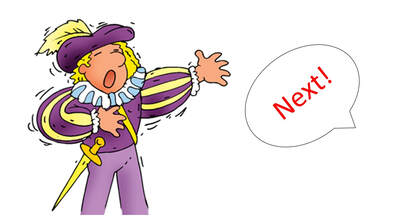 In terms of uploading your book, it is no more difficult than using any of the self-publishing websites with which self-published authors, like you, will already be familiar. However, there are two things which are very different:
Because I had already decided on my narrator, I didn’t need to get into the audition process. But basically, if you want to look for narrators who are already registered with acx.com (and the vast majority are) you can upload an extract of your book for prospective narrators to audition and bid for the work. You can apply filters for your narrators, such as nationality, language, gender, accent, and general tone of voice you want for your book (serious, dramatic, humorous etc). If you have already decided on your narrator, as I had, you can search for them by name in the appropriate section, and they will be linked to the project.  When you tell acx.com the wordcount for your book, they do a calculation on how long it should take for a narrator to read (a 90k book is about 9.5 hours). In the appropriate section of the site, you can then enter an hourly rate you are willing to pay. Multiply one by the other and you get an indicative cost for your audiobook. I would suggest a starting price of about $50 (£45) per hour. If you don’t get any bids to narrate your book by the cut-off date that you specify (typically 2 - 5 days) you can increase the hourly rate until you get a bid with which you are satisfied. The site pays royalties of 40% for exclusive distribution rights for your book or 25% for non-exclusive rights. I went for exclusive, which gives me 20% and my narrator 20% Having already chosen my narrator, and found him in acx.com’s directory, I filled in the details for the royalties share scheme. This section also asks if you agree to fund some or all of the narration costs. Don’t tick that box if you have agreed a “royalties only” scheme with your narrator, as I had; acx.com doesn’t need to know about the lump sum payment made using Fiverr.com Caution: once you have posted these details you can’t change them. You have to cancel the whole project and start again (as I discovered).  And that’s about it. Your chosen narrator will get to work and provide you with a 15 minute segment, so that you can verify they are narrating your book the way you expected. Once you have signed off on that they will carry on with the rest of the recording and they upload the files when they have finished. You listen to the files to make sure you are satisfied and after that it is no different from publishing an ebook or paperback. Publishing an audio book isn't a speedy business. Firstly you have to wait while your narrator actually narrates your book and it probably isn't their full time job, so they will be doing it in their spare time. Secondly, once it is uploaded there is a lengthy quality review process which acx.com says takes 10 business days to complete but which took longer in the case of my book, for some unexplained reason. Then comes the hard part, of course – marketing the audiobook. Because, just like any other publishing medium, no-one is going to stumble on your book by accident. You have to tell readers/listeners about it, and where to find it. But this is where you get a little bit of a bonus by being on a royalties share basis. Because your narrator has a vested interest in the book being successful and they will probably do some marketing on their own behalf. Can you narrate your own book?  If you think you have the voice for it, then of course you can. But beware, acx.com has very tight quality standards and you may not be able to reproduce these at home. Readers also want a “clean” listening experience, so they don’t want to hear the sound of your children squabbling in the background, or your dog barking at the neighbour’s cat (or both). See the technical checklist I linked to above. So, how successful has my audiobook been? 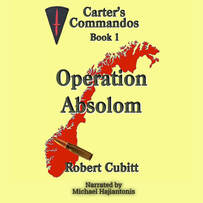 I have no idea because it has only just been launched. But I’ll be back after Christmas with an update, so be sure to check back. And if you want to find out more about my audiobook version of Operation Absolom, you can download a free extract here. Or you can check it out on Amazon by clicking here. If you are an author who would like to use a male British narrator for your book, then I am pleased to recommend Michael Hajiantonis. You can find him on acx.com under that name or you can do what I did and find him on Fiverr.com using this link. If you would like to get a promo code for a free download of the Operation Absolom audiobook, just email us through our contact address. All we ask in return is for a review and a share on your social media. Good luck! If you have enjoyed this blog and want to make sure you don’t miss future editions, you can sign up for our newsletter. We’ll even send you a free ebook for doing so. Just click the button below. This week we hand our blog to one of our authors, who is reviewing a book. 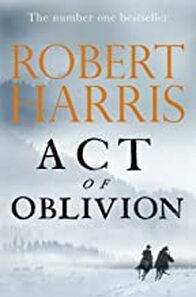 I’m a lover of historical fiction, so when I heard about this book it was an easy decision to buy it. What made it even more attractive was the fact that many of the people who are used as characters in the book were real. They lived and breathed and did many of the things that the author attributes to them. While some of the story may be fiction, a lot of it is historical fact. Act of Oblivion, by Robert Harris, is set during what was known in England as “The Restoration”. That period after the end of the rule of Oliver Cromwell, when the monarchy was restored to England (Useless trivia- it was still known as England even though it included Scotland, Wales and Ireland. It wouldn’t become “Britain” until 1707). When Oliver Cromwell died, it was his wish that his son, Richard, succeed him as “Lord Protector” (King in everything but name). However, the English establishment didn’t fancy that. If they were going to have a King, they wanted it to be a proper King and the rightful heir to the throne. So, Charles Stewart, son of the executed King Charles I, was invited to come back from his exile in Flanders. There was the thorny issue of what to do about the people who had fought against his father, so The Act of Oblivion was passed by Parliament. This guaranteed that a free pardon was granted to all who had fought on the side of Parliament during the English Civil War, with the exception of a small group of people. That small group of people included the men who had sat in judgement on Charles I at his trial and those who had signed the warrant for his execution, about 50 or so men. A couple gave themselves up in the hope of receiving Royal mercy, some had already died of other causes, some were living in exile in Europe, and some had gone into hiding in England. At least two fled to the American colonies, where there were many allies of the Parliamentary cause and its Puritan religious supporters. The book starts in 1660, just after Charles II returned to the throne, with the arrival in New England of Colonel Edward Whalley and Colonel William Goffe. They are two former soldiers in the Parliamentary Army (Roundheads, as they were known because of their dome shaped helmets) who are on the run under threat of execution, having been two of the signatories of the execution warrant of the late King Charles. Whalley also happens to be Goffe’s father-in-law. They were real people. As well as being a soldier, Goffe is also a zealous Puritan, with a knack for giving rousing sermons. Whalley, while being Christian, is less committed to the Puritan ideal. Much of the story follows their travels around the fledgling colonies of Massachusetts and Connecticut as they try to evade capture and are protected by likeminded colonists. In London we have Richard Naylor. He is fictitious, but as Harris says in his introduction to the book, if you have a hunt, you must have a hunter and Naylor represents all the real life hunters of the wanted men. Naylor is a bitter man and is relentless in his pursuit of Whalley and Goffe, against whom he has a personal grudge, as well as the others under sentence of death. He is Clerk to the Privy Council, which allows him to wield enormous power. However, he finds that his power is limited by geography and what he can do in England to intimidate people he isn’t able to do in America, despite it being under English rule. London is a long way away and it would take a lot of English troops to enforce the warrants that Naylor is carrying. "You don’t have to know much about the English history of this period to enjoy this book" I think we are supposed to feel some sympathy for the characters of Whalley and Goffe. They were coerced into signing the execution warrant by Cromwell (which really happened) and see themselves more as victims. However, I had little sympathy for them. There is a considerable difference between doing one’s duty as a soldier and signing a death warrant because you have been ordered to. do so. But that is just my opinion. You don’t have to know much about the English history of this period to enjoy this book. Pretty much all the historical information is skilfully fed into the narrative along the way. It is very well researched. If you are an American and would like to understand a little more about what life was like in your country in the second half of the 17th century, then you may find this book of interest. You may also discover why your country has some of the political and religious views that are held by some people today, because history does sometimes repeat itself. You will also find out how New Amsterdam became New York. The pace of the book is what I would describe as “steady”. There are points of high action, but there are also long passages when not a lot happens, which is why I have only given the book 4 stars rather than 5. Whalley and Goffe are in hiding for lengthy periods and it’s difficult to inject much pace into those sections. However, they are important when it comes to understanding the historical and religious context of the English Civil War, as Edward Whalley starts to write a memoir of Cromwell, which tells us a lot about the man.. Harris is a very successful author, so it is not for me, a mere reader, to comment on his writing skills, but I can tell you that I never lost interest in the book, and I also learnt a lot, sometimes without even realising that I was learning things. I would recommend this book to readers of historical fiction on both sides of the Atlantic Ocean. If you want to know more about “Act of Oblivion” by Robert Harris, just click the cover image or use this link. This week we hand over our blog to author Robin Saint, who wanted to plug his book "Outlaw", but we wouldn't let him. The views expressed in this blog are those of the author and aren't necessarily those of Selfishgenie Publishing.  It is that time of year again, and no matter how hard I may try to avoid it, it’s not going to go away. So, if I have to address the subject at all, I may as well make this blog useful. If you are one of those gift givers that has a natural talent for choosing the right thing, then this blog may not be of much use to you – but for everyone else,, you may find it useful. Oh, by the way, just because the recipient said ‘Thanks, it’s just what I wanted” it doesn’t mean they meant it. They may have just been trying not to hurt your feelings. Look at the eyes – are they smiling as much as their mouth? As a male, this list tends to be focused on what men like or don’t like to receive, but I’ve added a special section at the end that hard won experience tells me what women don’t like.  The Top Ten Worst Christmas Presents
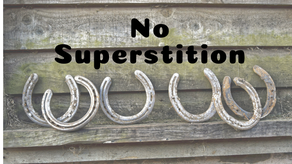 10. Anything to do with astrology, feng shui and other “ancient wisdom” or “new age” philosphies. – See also item 9. Come on people, we live in the 21st century. The reason people believed in this stuff in the past was because they knew no better. We do know better. It doesn’t work and never worked. Events will happen or they won’t happen. They can’t be predicted and they will still happen or not happen no matter how you arrange your furniture, place crystals around the room or make things smell. If you dance naked in the moonlight on Mid-Summer’s eve and then win the lottery the next day then it’s a coincidence. You would still have won the lottery if you’d stayed fully clothed and gone to bed instead. The only people whose fortunes improve through belief in this stuff are the people who make, sell or publish the garbage that perpetuates this superstitious mumbo jumbo. You may think it odd to exclude presents related to religion and superstition from a list related to a religious holiday, but I make no apologies. I celebrate Christmas as a tradition, much the same as I do Halloween, not as a religious act.  My Top One Best Christmas Present. A gift that suggests that the giver has spent some time thinking about the recipient’s personality, their hobbies and pastimes, their lifestyle and other character related traits. If they enjoy gardening, make it gardening related. If they enjoy long walks in the country, make it something that can be used on long walks, or which inspires them to find new places to go for walks. It might not be what they wanted, but it will show that you cared enough to think about it and, as we all know, it’s the thought that counts. It will also show that you read this list. What not to give a woman.  1. Sexy underwear or lingerie. I’m not being politically correct here, it’s just that men usually get it so wrong. They buy what they think is sexy, or imagine is sexy, not what the woman will feel comfortable wearing. It can make a woman feel like a sex object and that is something the modern woman is unlikely to appreciate. Even if she doesn’t object on the grounds of feminism, the man’s taste in such garments is likely to make a woman cringe. Best to stay away from that whole lingerie area – and probably night attire as well. You can't win, so don't try. 2. Perfume. Of course, many women love perfume and it is actually a good gift – if you buy the right perfume. Women are very fussy about their scents, so buying the perfume that has the most pretentious advertising campaign rarely works. If you want to buy perfume, do some research. Ask her best friend what she wears, ask her Mum, her sister, ask just about anyone who knows her. If you live with the woman in question, or have access to her bedroom (not in a creepy way) then check out the dressing table. The favourite perfume will almost certainly be in pride of place and the bottle will probably be almost empty because it is used so much. Memorise the name. Write it down. Have it tattooed on your arm if necessary. Just a tip - if it costs less than £50 ($60) then it probably isn't the right perfume. 3. Kitchen or household goods or appliances. Already mentioned above, but this is a particular no-no for husbands and boyfriends to give. A quick way to spend Christmas Day in frosty silence is to buy your beloved a new vacuum cleaner, a set of matching bath towels or, even worse, kitchen towels. 4. Never give a woman bathroom scales or anything weight loss related - unless you like eating hospital food. You may think this shouldn't need saying, but I know at least one man that made that mistake (unsurprisingly, he's now divorced).  How to get the right present for a woman Listen! Since the beginning of November, possibly earlier, the woman in your life has probably been dropping hints about what she would like for Christmas. If she’s been stopping next to jeweller’s shop windows, in the perfume departments of department stores, asking you if you like such and such a dress in a shop window, she hasn’t just been making idle conversation, she has been telling you this is what she really, really wants. If she said she’s always wanted to drive a Formula 1 racing car, then she wasn’t just fantasising, so get her an Experience Day so she can live her dream. With regard to Experience Days, do be careful. Thinking ‘she’ll love this’ is dangerous if she hasn’t said she would love it. It’s also dangerous to assume that she’ll enjoy doing something as a couple. Just because you want to jump out of an aeroplane at 10,000 feet it doesn’t mean that she does. Spa days and pamper days are popular with most women, but they aren’t a solo experience. Either you have to be prepared to go with her, or you have to give it as a day for two people so she can take her bestie. If your beloved hasn’t been quite so forthcoming, then ask her to make a list and e-mail it to you, with links to web pages where you can see the items for yourself. Make sure you pick one item from the list and you can’t go wrong. It isn’t romantic, but it works. The surprise element comes from her not knowing which item from the list you will choose. And if you want to receive a present that you will enjoy, then make sure you have a list. People will ask the special someone in your life what you would like for Christmas and if they have a list, they can answer. And if she doesn't seem that excited when you hand the present over, at least you have the excuse that it was on the list. And if you love her, make sure that your Christmas present to her tells her so.  Tips for everyone Amazon wish lists are very useful. Set one up and make sure people know where to find it. Even if your friends and relations don’t shop on Amazon, they can still check out your list to get ideas for what to buy from wherever they do shop. Personally, I think you can’t go wrong with a book both for men and for women. If you know what sort of books the recipient likes to read, then choose the latest best seller in that genre (but it is worth checking with a family member or friend to make sure they haven’t already bought it for themselves}. If they are a sports fan, then a book related to their favourite sport ticks two boxes at once. If you are thinking of giving a book, then check out the “Books” tab on this website for some great ideas - especially for lovers of sci-fi, World War II action and golf. (there's a particularly good one on there about Robin Hood but Selfishgenie won't let me tell you its title). If you have enjoyed this blog and want to make sure you don't miss the next edition (which is all about audiobooks), then why not sign up for our newsletter? We'll even send you a free ebook if you do. Just click the button below.
 It is disturbing to read on social media, especially Twitter, that so many authors struggle with writing a synopsis for their book. After all, they have just written between 80k and 140k of beautiful prose but are struggling to write just one page of A4 that will communicate to an agent or publisher what the book is about. Perhaps, like panic, the under confidence of some authors is spread to other authors like a virus, making perfectly confident writers suddenly doubt their ability. It is about the only explanation I can think of. But rather than try to analyse the cause perhaps, in this blog, I can help authors by offering some practical advice.  The starting point of any task is to establish a goal – something to aim for. Fortunately, agents and publishers have already done that for you, because they know what they want from a synopsis. To put it simply, they want to know what your book is about in as simple language as possible, so that they can be confident that the author knows what it is about. You may wonder about the last part of that sentence. After all, surely the author knows what their book is about, don’t they? Apparently not. The author may think they have written an exciting fantasy/sci-fi/hist fic/YA/whatever novel, but if they can’t explain that in simple terms, the agent (or publisher – I’ll stop using both terms from here) won’t believe that they know what they are doing. "Pick one genre!" 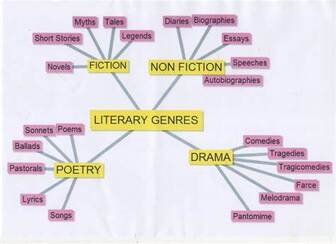 To start a synopsis, you must first clarify what genre it is written for. If you think your book crosses genre boundaries, eg a fantasy that includes a romance, then which genre is it mainly aimed at? In life I have often said that you don’t always have to pick a side, but in writing a synopsis you do have to. Pick one genre! If the romance element of the story is crucial to the fantasy plot, you can cover that later (or vice versa if romance is the main genre). And don’t start getting into sub-genres, the way Amazon categorises books – they have something like 16,000 different genre classifications. In reality there are between 35 and 50 recognised genres, depending on who you ask. Purists would argue that it is an even lower figure, but that is why they are called purists. 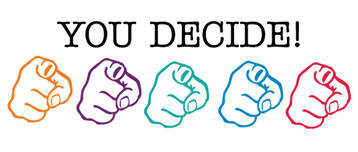 Picking your genre is vital because your agent has to know that the book has a chance of making money. Writing in an unfashionable or unpopular genre is going to dispatch your novel to the reject pile faster than a split infinitive ever would. Also, there are many agents who specialise in a specific genre and they want to know up-front that they are the right agent for your book. They won’t waste their time reading your book if it isn’t in their genre. The next step is to write a brief (75-100 word) summary of the plot. It is suggested if you can’t summarise the plot in that few words, then you don’t really know what you have written. To give you some idea of what I mean, try this summary of one of our author’s books. 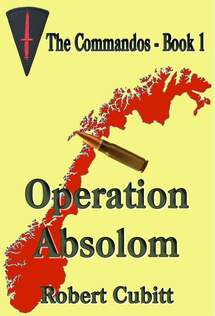 “Operation Absolom tells the story of a young man, Steven Carter, who enlists in the British Army during World War II. Bored with garrison duties he decides to volunteer for a more adventurous life with the newly formed commandos. In doing so he gets far more adventure than he bargained for and comes close to losing his life in the freezing waters off the coast of Norway. In order to survive, he has to dig deep into reserves of courage and determination that he didn’t know he possessed.” To save you counting, that is 88 words. The key thing about that summary is that it tells you when the story is set (World War II), who the protagonist* is (Steven Carter), what he gets himself involved in (fighting in the commandos) and why he gets involved (seeking adventure). It also tells you that he gets more than he bargained for, which is the source of much of the drama in the plot. The last sentence indicates a degree of personal growth taking place during the story- which means that the character develops as the story goes along.. (FYI you can find out more about Operation Absolom by clicking on the cover image) 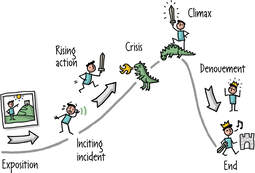 The main body of the synopsis is a longer description of 300 to 500 words. The way I go about that is to take each chapter in the book and write a single sentence saying what that chapter is about. Again, using Operation Absolom as an example, here’s what we came up with.
And so on. If there are chapters that just deal with sub-plots, delete those sentences. There is nothing wrong with having sub-plots, but the agent is more interested in the central plot, so confusing things with sub-plots and using up valuable word count along the way isn’t going to help your case. Now join the sentences up into sensible paragraphs, emphasising the major points of the story. If you are familiar with the way story arcs work, with highpoints preceded by build-up and followed by aftermath, then it is important that the description follows the same pattern, so that the agent can see where the high and low points are and therefore get some feel for the pace of the story. This is what we did with the three sample sentences we produced above: “After a conflict with his commanding officer, Steven Carter decides to volunteer for the commandos. His training in Scotland reveals an unconventional approach to soldering that risks cutting his commando career short, but he survives to join his new unit, 15 Commando. At once he is pitched into training for a top secret operation, Operation Absolom.” I’ve used only 57 words to cover almost a quarter of the book, leaving me plenty of word count still available to deal with the more action packed parts of the book. Note the hints and teasers used to tantalise the reader eg conflict, unconventional. If you are struggling to keep below the 500 word level, then you are probably including non-essential information.  As well as sub-plots, don’t include: - Dialogue, - Descriptive passages, - Inconsequential characters, - Backstory (you may hint at this with phrases such as “troubled past” or “difficult family life”), - Moralising messages - Metaphors (speak plainly). If you include any supporting characters, refer only briefly to their role in the plot and their relationship to the protagonist, eg Sam is Frodo’s best friend and would rather die than be left behind in the Shire. Later in the story he takes on greater significance in making sure that Frodo fulfils his purpose.  Beware the search for perfection! Beware the search for perfection! The final, short, paragraph just closes the synopsis off in a neat and tidy manner. Tell the agent what the total wordcount is and if you have any plans for a sequel. If the sequel is already underway, say that. If book is intended to be part of a series, say how many books you are planning for it (agents like to know they can expect a long term relationship with an author (with accompanying long term income)). Finally, beware of seeking perfection. You can spend a hundred hours on drafting and re-drafting 40 versions of a synopsis and it probably won’t be any better than the second or third draft. The agent doesn’t care if the synopsis isn’t perfect because, unlike the book, it isn’t something that is ever going to be published. The agent expects it to be properly spelt and grammatically sound, that is all. What they are really interested in is whether or not the story sounds interesting enough to read all the way through. How do you know if your synopsis is good enough? The same way as you know your book is good enough. Show it to someone whose opinion you value and ask “Would you read this book based on this synopsis?” As always, don’t rely on family or friends to be honest with you – they love you and tend to say what they think you want to hear. Use someone who can be relied upon to be impartial, such as your beta readers. If you haven’t got anyone to whom you can show your synopsis, send it to us. You can find our address on our “Contact” page. Make sure you tell us that you just want some feedback on it, so we know you aren’t submitting your book (though we may invite you to submit it if we like the sound of it). * Always use the word “protagonist” in a synopsis, not “main character” or “MC”. It is more professional sounding. There is only ever one protagonist. Anyone else is a “supporting character”. For the same reason the “villain” is always the “antagonist”. If you have enjoyed this blog and want to make sure you don’t miss future editions, you can sign up for our newsletter. We’ll even send you a free ebook for doing so. Just click the button below.  In one of our recent blogs we talked about using this medium as a marketing tool. In response we got a few emails from people saying they wanted to blog, but didn’t know what they should blog about. So here are a few “prompts” for you to think about. We claim no originality for this list. It has been collated from numerous sources. Some of these ideas are better than others and all will need to be adapted to suit your personal style.  1. List post List posts are great. List posts also give you high click-through rates. You can use list posts for tools, resources, to do things, checklists and so on. You see these quite a lot in search results, eg “Twenty great ways to improve your sales”. 2. How to post How-to-post is an excellent way to describe any topic in your niche together with screen shots, images, and videos. Many of our blogs are basically “how to” posts.  3. Case study post Case studies are my favourite and you must include them in your content marketing strategy. The words “Case studies” weigh more than your usual articles. A case study is simply a story – usual about success – that demonstrates the application of certain techniques. For example, you might link to a blog post and then demonstrate the techniques the originator used to make it more effective. 4. Ultimate guide post Guide post is a very detailed and comprehensive post. When you post this kind of article you need to make sure that you don’t leave any stone unturned. Make it a thorough and precise guide for higher conversions. This is really just a more in-depth “how to” blog – but it covers all known aspects of the topic.  5. Interview post Ask any influencer or blogger who ranks a little higher than you in your niche for an interview. You will be surprised how many influencers or blog owners will agree. So, if you know an author that is making a few more sales than you (you can identify that from the sales rankings of their books) you could ask them. They will post about the interview on social media when it goes out, attracting more readers to your blog. 6. Link roundup post Link roundup is one of the best ways to get connected with influencers or experts in your niche. You can do weekly or monthly roundups. You can take the expert views from their own blog content and put them with the link and description and you are ready to go, but make sure you notify them once you post it – they might share :) 7. Quote post Quotes are great. They are motivational, inspirational and people love quotes from influential people. The easiest and most effective way to create that kind of post is to put together the quotes from influencers together with a link. It works great. The quotes blog is really just a niche form of the list post. You can also turn this into a “case study” blog by showing how you applied the quote’s message. 8. Review post Review a book, product, service, location or anything else. You need to be totally honest in your reviews, so we tend to only post ones that we can honestly award 4 or 5 stars. You could post lower rated reviews, but there is always the chance that the author/seller may decide to take revenge – it has happened to us. We post a lot of book reviews because the authors Tweet the links and then we get extra traffic to our blog page. 9. Survey post Whether you want to launch a new product, new blogging site or theme – survey your audience. You can do a survey through survey blog posts. We’re not too sure about this one. The easiest way to do a survey is to use the tools that exist on several social media sites. But there' no reason why you shouldn't use a blog to conduct a survey too.  10. Infographic post Infographic is sexy and entertaining. It is also easy to consume. Infographics are a quick and funny way to learn about the topic without a ton of heavy reading. Basically, this is just a slideshow turned into a short video. 11. Trend post Trend posts are great at the beginning of the year or before any holiday season or on the latest trends in your niche. It looks forward to what may be to come. You can link it to your target audience’s special interests. 12. Holiday post Create a post before a holiday or during a holiday. This can be advice, entertainment or your holiday routine. This could be something like a Christmas story or a feature on some aspect of the holiday, such as food.  13. Behind the scenes post Show behind the scenes of how your blogging system works or your blogging life or blog analytics or behind the scenes of your product. This one is ideal for writers. There’s so much that can be said about the process of writing a book. 14. Comparison post People love comparing things and it is a great idea to post the comparison blog of two different products or someone else’s product; compare the features and benefits of your product. I’m not sure how this would work with comparing books, but it might work with comparing different marketing strategies or techniques. 15. Income reports post Show your audience the income you are making. You can show either yours or your organization’s income report. It is like a financial report. This will also help you build trust with your audience. Basically, this is just showing off and not something we intend doing, but some people might like to do that. But it can help readers to know which markets produce the best incomes for certain types of books.  16. Special interest posts If you have done as we suggested and found out what sort of interests your readers might have, write blogs that appeal to those interests. Be careful with the content, however. If you don’t know a lot about a subject – steer well clear. Or do more research! 17. Best of posts Pull out the best post of yours and sum up together to make one single blog post and present it to your audience. Basically putting old wine in new bottles, but it’s a quick way to get a blog ready if you are short of time. 18. Product update post Update your audience on your books/products or new features. It can be your existing products or products you have been working on. It is always a good strategy to create excitement and anticipation among your audience. Really just a variation on number 16, but focusing on the product rather than the wider world of writing.  19. Challenge post Take any challenge such as losing weight, getting a certain amount of traffic, subscribers and then write about the progress, tactics or any tools you have used or are using. People love to see challenges and are eagerly waiting to see your monthly progress blog post. OR you can post a challenge for your audience. There is a lot of scope here for blogs on a variety of subjects, from writing to climbing mountains. 20. Contest post One of the evergreen ways to engage people is putting together a nice and impactful contest post. It works in all niches regardless. The downside is that if you run a contest, you probably need to offer a prize. 21. Journey post Travelling or having travelled somewhere or attended any conference or event, posting about your journey together with do's and don’ts. People like to consume ideas and suggestions. More of a travelogue than a blog, but I know plenty of people who do this. 22. Upcoming events post Post weekly/monthly/yearly city events. Post about the events with past year event pictures, short description and why you should attend these events. (Don’t forget to notify event organiser about your blog post, they might share :) You have to keep your ear close to the ground with this one, to know what is upcoming. But there are plenty of literary festivals and book fairs, and lots of people want to go them now that we are out of Covid restrictions.  23. Quiz post People love quizzes including myself. Buzzfeed is a great example of using quizzes in their content marketing strategy, they always do quizzes. You can use Quizzer to create quizzes or Playbuzz WordPress plugin if you have a WordPress website. 24. Crowdsourced post The crowdsourced blog post is another great way to get connected with influencers. Bring on multiple influencers to answer the single question. When you have 10 experts answering the same question each in 140 words, you have a 1,400 word blog post. 25. Problem/solution post You audience have a problem, give them a solution. You can give them a solution in many forms such as suggesting books, techniques, hacks, tools, events to overcome their problem etc. Very best way to start such kind of blog post is by defining a problem and then by presenting a solution. For example, in the past we have blogged about how to deal with both writer's block and imposter syndrome (separate blogs, of course - we don't want to use up a good blog idea all in one go) This is basically what we have been doing with our blogs on social media marketing. But if you are an expert in any field you can generate blogs from what you know best. 26. Share recent travel experience Share your travel experience. This work like a charm for travel bloggers. Put it together (your travel experience) and then post it as a blog post. Not really any different from number 21, but you could spread it over a number of posts by focusing on different aspects in each blog: food, culture, sights, activities etc. 27. Blog anniversary post So you are blogging for a year now, post it as a blog post. Share your blogging career experience on your blog anniversary.  28. Stats post Create a post with sexy stats, it is like a research post. You can show any type of stats such as your traffic stats, any blog or business achievements (if you have a solid one), market trend stats in your niche – it can be holiday stats, industry stats, product stats. Stats are an easy way to tell a story, but you have to be sure the stats actually support your message. 29. FAQ post Are you getting asked the same question again and again from your readers? Create a blog post on most frequently asked questions. Most authors get asked the same questions over and over, so this suggestion might fill several blogs. 30. Q/A post It is like an interview blog post but you can position it in slightly different way. Answer the unique questions from any of your readers. Usually, a video blog work very well but don’t worry about the medium yet, let you audience/readers decide what medium they want. This takes number 29 and goes into more depth with a specific question. It is also similar to number 25.  HOW OFTEN SHOULD YOU POST A BLOG The short answer is “As often as you can”. You need people (a) to come back to your website on a regular basis and (b) to Tweet about their visits or just RT the link. That means giving them a reason to come back and that means providing fresh content for them to read. We post once a week. It is hard work coming up with fresh ideas, but the above list gives you plenty of scope to get creative. If you have enjoyed this blog and want to make sure you don’t miss future editions, you can sign up for our newsletter. We’ll even send you a free ebook for doing so. Just click the button below. .  There is one P in the 6Ps of marketing that we have yet to touch on, and that is “process”. In some way all of the previous blogs touched on this as a process has to have content and they were about content. But the really important part of process is another P – planning. A marketing plan is essential to success because, if you don’t have a plan, you won’t know what you are supposed to be doing or when it should be done. So, what does the plan look like?  Rudyard Kipling Rudyard Kipling The content of your plan lies in the old Rudyard Kipling quote “I keep six honest serving men (they taught me all I knew); Their names are What and Why and When and How and Where and Who.” Putting those words into questions helps you to decide the content of your plan:
There are many similar questions that can be asked and our previous blogs tell you what to ask and how to answer some of them. 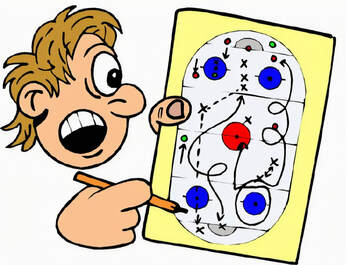 You may have noticed that we have omitted “why”. That’s because the why question is “why should I write a plan? There is an old saying about planning: If you fail to plan then you plan to fail. That’s the why. That is all good, but some people have never constructed any sort of plan at all, so this blog is aimed at them. How do you get from that quote above to selling more books?  The first thing you need when creating a plan is an objective, goal or desired outcome. Call it what you like, but it is a description of where you want to be by the time your plan has been delivered. For Indie authors this is usually quite simple to define – your goal is probably to sell more books. You even have a readymade measurement to tell you if the plan is working – the number of books that you are selling after you have delivered the plan compared to the number you are selling now. But that is a big goal to achieve and you will need to do a lot of work to achieve it. What you also need to know is if your plan is taking you in the right direction. It might take you 3 months or more to achieve your goal and that is a long time to wait to find out that your plan isn’t working and needs to be re-thought. "if each step is successful, then the final outcome should never be in doubt." So, you have to create sub-objectives, which you can tick off along the way to make sure you are staying on track for success. Believe me, if each step is successful, then the final outcome will never be in doubt. And if some of the sub-objectives still seem quite daunting, you can break them down even further. Remember the old maxim: “How do you eat an elephant? One bit at a time.” (apologies to vegans).  Not this sort of trial. Not this sort of trial. For each major objective you need to ask those who, what, where etc questions to identify the sub objectives and if you want to break the sub-objective down into smaller bits, you may need to ask them again. But whatever you plan to do, keep it simple. Simple plans have fewer things that can go wrong and the less that can go wrong, the more chance there is of success. You can always go back to the plan later, after you have learnt from trying things out, and get a bit more ambitious in your use of marketing techniques (I talk about reviewing plans later). You may even want to run a few “pilot schemes” or “trials” to see if what you plan to do is actually going to work on a larger scale when you set the whole plan in motion.  One of the things of which you have to be careful, is that you lay out your sub-objectives in the right order. For example, if you were building a house, “Put the roof on” wouldn’t appear in the plan until after “dig foundations” and “build walls”. You may need to spend a bit of time making sure your marketing plan is constructed (groan at bad pun) in the right order, just like you would build a house. Test the logic and feasibility of doing things in the order you have described, to see if you have got it right. In previous blogs we talked about getting some training in social media marketing, so that might be an early sub-objective in your plan. We also talked about writing your marketing messages, so trying those out on people might be another sub-objective. But basically, all you are doing is breaking down one very big and daunting objective into several smaller, less daunting tasks, then laying them out in a logical order. "there is no point in knowing “you are here” if you have no idea what “here” looks like." In project management we call the completion of sub-objectives or tasks “achieving a milestone” and it feels very rewarding to reach each milestone and tick it off your plan. But, just like real milestones, you have to know where they are, which means having some sort of measurement of achievement for each task. After all, there is no point in knowing “you are here” if you have no idea what “here” looks like. In the same way, you can’t know you have reached a milestone if you don’t know what the milestone looks like.  A written description of what it will look like is the best way of recognising a milestone. For example, a description of the messages you want to send out about your book might read: “Write 7 sentences/paragraphs of up to 140 characters* each that provide a clear indication of the book’s content., grammatically correct, correctly spelt and tested on sample readers.” You can see from the description that “quality” checks are built in. That is the sort of task description you could write for each sub-objective, so you will recognise your milestone when you get to it. But all plans are meaningless if they don’t have resources assigned to them. A plan without the resources to deliver it is just a wish, a hope or even a dream.  Is it a plan - or just a wish? Is it a plan - or just a wish? These resources can include money, to pay for things such as advertising. But a far more important resource is information. You have to know the answers to those who, what, why etc questions you asked, so that you can apply your other resources in the right place at the right time. So one of your sub-objectives is almost certain to be information gathering, or research as it is more commonly known. This will result in you not wasting your other resources (such as money) on the wrong activities. Time is another major resource. None of this stuff will do itself. Yes, I know, you’re a writer. You don’t want to have to spend all your time doing marketing.  Which makes it all the more important that you don’t waste what time you are willing to expend on marketing by doing the wrong things. There is an old saying in quality management “Isn’t it amazing how people who don’t have time to get things right the first time they do them, always have time to do things a second time when the first time goes wrong.” And if you are spending money, you can’t afford to spend even more money correcting mistakes by getting things wrong first time. So, all that research is critical if you want to get things "right first time". You will make mistakes (because you are human), but you can minimise the number of mistakes you make.  The final resource I’m going to talk about is knowledge, which I have already touched on in previous blogs. If you don’t really know what you are doing, you are going to waste your other resources on getting things wrong. "Trial and error” may teach you a lot, but it is an expensive way to learn. Invest in yourself, even if the investment is just time spent doing a free on-line course. We’re not talking about studying for a 3 year marketing management degree here, just a few hours learning the basics of social media marketing and trying out a few ideas to get a feel for what is right for you and your books. Once you have your marketing plan – you can use it again and again, refining it each time as you learn what works best and what isn’t working so well. because you will have to keep 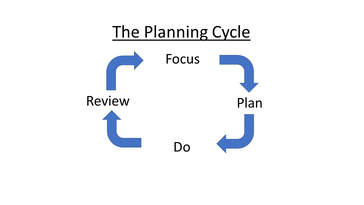 repeating your marketing activity, because marketing messages soon fade from people’s consciences and you will always be looking for new readers who will buy your books, because nobody buys the same book a second time. Consequently, you have to keep reviewing your plan to make sure it is delivering for you. There is a thing called the planning cycle which is made up of four stages:
Just because your marketing plan delivered some sales, it doesn't mean it couldn't have delivered more sales, so you need to look at your results to see where improvements can be made and then make those improvements. "But I'll finish with one word of caution"  That brings us to the end of this series of blogs on marketing. We hope you have found them helpful and, more importantly, we hope you are selling more books as a result of reading them. But if you still have questions, please feel free to ask them. You can find our email address on our “contacts” page. I’ll finish with one word of caution. You can’t make a silk purse out if a sow’s ear. A brilliant marketing plan won’t sell a book that readers don’t want to read. So, if you are doing all the things we have talked about in this series of blogs and your books still aren’t selling, then you have to ask yourself why. The answer is no longer going to be “because of a lack of marketing”. If you would like to express your thanks for the guidance we have offered over the past 13 weeks, it would be welcomed. We are publishers, so the best way of thanking us is to buy one of the books we publish. Take a look at our catalogue on our "Books" page. * We know that Twitter now accepts posts of up to 280 characters, but you need to make an allowance for the inclusion of a link to the book’s sales page and for hashtags. And, of course, character count isn’t an issue for Facebook posts, though people rarely read beyond the first few lines. For Facebook, think “elevator pitch” or “blurb”. If you have enjoyed this blog and want to make sure you don’t miss future editions, you can sign up for our newsletter. We’ll even send you a free ebook for doing so. Just click the button below.  This week’s blog is split into two parts, but they are closely related. The first is Search Engine Optimisation (SEO) and the second is measuring the success of your marketing. Now, we would be the first to admit that we are not experts in SEO. If you want one of those, all you have to do is search SEO on Twitter and you’ll find about a gazillion people on there who either are, or claim to be, gurus on this subject and they’ll help you – for a price. But in terms of the completeness of this series of blogs, we would be very remiss if we didn’t mention this subject, so here goes. "helping people to find you, or your books, on the internet" What is SEO? It’s all about helping people to find you, or your books, on the internet and social media.  Most blogs about SEO concentrate on promoting a website. Firstly, you may not have a website and secondly, we’re mainly talking about promoting your work through social media. However, people do search for book ideas using search engines such as Google and they also do searches on Amazon and other book selling sites and the same SEO principals apply. People do searches by entering search words and the critical words they use in the query are known as “keywords”. If you are using the same keywords as the person doing the search, there is a high probability they will find you (or your book). But if you aren’t, they won’t. We looked for more information on using keywords on Amazon and this blog was quite useful. According to that article, people looking for books on a particular subject are likely to enter a short description of what they are looking for, rather than single words. This is called a “string” of keywords.  So, in the “keywords” section of your book’s description, you need to connect together several attributes about the book that someone may look for. For example, if someone is looking for a romantic novel that also involves pirates, they may type in the string “books about romance involving pirates”. I actually typed that into Amazon’s search bar and, guess what, I got several returns of books that involved both pirates and romance.  Not a very romantic pirate. Not a very romantic pirate. That approach won’t guarantee that your book is on page one of the results, but it will certainly be found and it will be in the list somewhere. We found some of the books we published on page one of the results thanks to the keyword strings we have used in their descriptions. Finding the right keyword strings may involve some trial and error. Unlike Google, Amazon’s search bar isn’t so good at predicting commonly used search terms based on what you are typing. We got as far as “Romance in…” when the predictive text gave up and didn’t suggest “including” or “involving”. When we tried “Romance and …” It didn’t carry on predicting past the P in “pirates”. This means that you have no way of knowing if a search terms has been used before. But it is worth spending some time trying out keyword strings that might work with your book and seeing what sort of returns you get on both Google and Amazon. Whatever you get is bound to feature your book somewhere in the results if you use the same strings in your book’s description. The ones that come up with the best matches are the ones to use. 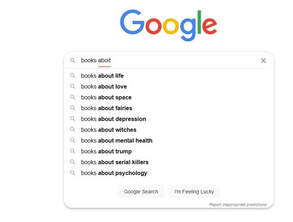 Many readers like following a series, so if your book is part of a series, even if it is only the first, make sure you include “…. book series” as one of your keyword strings eg Sci-fi book series. And if you aren’t getting the results you expected after a few weeks (you have to give things time to produce results), you can try some different strings and see how they work. Importantly, though, if your books use those keywords strings on Amazon (and other retail sites), they will also be picked up by Google if someone searches there for your books. So, you can try doing your searches there first and make use of Google’s better predictive search term capabilities. "The use of the right keywords is also a factor when you use SEO for social media." The use of the right keywords is also a factor when you use SEO for social media. As we said at the start of this blog, we aren’t experts in SEO, so we went looking for people who are and we came across this blog, which contains the key messages.  People do search social media using keywords and hashtags, so having the right keywords and hashtags in your posts will help them find you. Every day Twitter tells you what keywords and hashtags are “trending”, so you can join in the conversations if you are interested in those topics. It’s unlikely that your keywords or hashtags will ever trend, but some of those trending topics may be of interest to your target audience so RT’ing the best of the posts will help with your engagement. But for you, it is using the right keywords or hashtags in your posts so when people do searches on social media using those words, they will find your posts amongst the results. There will still be a crowd of course. If you write romance, then #romance is a hashtag that produces a lot of search results. So, you have to use something a bit more targeted, such as #periodromance or #modernromance. There’s still going to be a crowd, but it will be a smaller crowd. 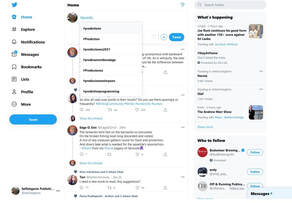 You can also create and use hashtags of your own. If your Tweets are RT’d, those hashtags will become better known over time. Your audience will start to recognise them and they will, perhaps, think of using them for searches. All hashtags started with someone creating them. Some never catch on, some are still in use years later. Finding hashtags that are already in use is easy enough. When you use the # symbol, predictive text starts to offer you choices of previously used tags. But you won’t know which ones are most popular amongst users. Just because hashtag has been used, it doesn’t mean it is useful. However, if a hashtag has been used a lot that day, Twitter will tell you how many uses it has had, eg “500 in Tweets in the last hour” 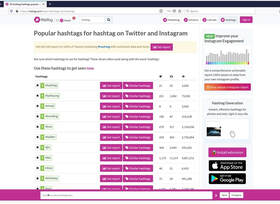 There are websites that will help you to choose the right hashtag. We use Ritetag, which is free. As well as showing you which hashtags are already being used and how visible they are, if you create your own hashtags you can look on Ritetag a few weeks later and see what sort of response you are getting. Just one final word on hashtags. Social media users comment on how distracting they are, so the experts advise never using more than three in any post and placing them at the end of the message, rather than within the main body. I was reminded of this just a few moments ago when I was on Twitter, came across a Tweet that was mainly made up of hashtags and immediately scrolled past it. "Knowing how your hashtags are working is useful information" Knowing how your hashtags are working is useful information. If they aren’t working, you need to find a way of promoting them or you need to change them. Which brings us to the generic subject of measurement.  Measurement is usually regarded as the boring part of marketing. Besides, there’s only one measurement that you are interested in – book sales. But measurement is pretty important when it comes to creating a successful social media marketing campaign. If you are going to do this well, you are going to start your campaign weeks or even months in advance of your book’s publication. That is a long time to wait to find out that your social media campaign isn’t working. So, you need to measure other things along the way to tell you if you are on the right track.  Think about a long car journey. One way to measure your journey’s progress is to read the road signs and see how far you are from your destination and, if your destination isn’t shown on the sign, how far you are from the next town along your route (known by navigators as a “waypoint”). If you have a satnav this information is constantly on display, along with an estimated remaining journey time – so you are quite used to doing this sort of measurement. Unfortunately, there is no equivalent of a satnav for your social media marketing so you will have to set up your own measurement system and your own “waypoints”. By system, we don't mean anything elaborate; just a few measurements you can track over time. You can put them into spreadsheet and create graphs if you want, but you don't have to, so long as you can read them and understand what they are telling you. If you are on the right track – great. But if you aren’t, it isn’t too late to re-think your campaign and try a different approach. In your car journey you might change your route to avoid traffic congestion at some road works and this is no different. Sometimes it only needs a slight tweak to the wording of a message to produce better results.  I’ll give you a real-life example. As part of our generic marketing (rather than targeting a specific title), we Tweet a different “Book of the Day” each day. For a long time, this wasn’t producing much in the way of interest – hardly any re-tweets (RTs) or “likes” and even fewer click throughs to Amazon. These are three of our measurements, used to assess if we are catching Twitter users’ interest. The posts we were using were images showing the book’s cover alongside its blurb. That allowed us to get past Twitter’s 280 character limit. Above the image we just said “Book of the Day” with the book’s title, the author’s name, a link to Amazon and a few hashtags, because the image told the user what the book was about – no need to repeat it (or so we thought). Then one of our colleagues mentioned how hard it was to read some Twitter posts on her phone. The text was so tiny that it was unreadable. She showed me the Tweet and I had to agree with her. I suggested she expand the image, but she said she didn’t have time to mess about like that. "The text was so tiny that it was unreadable" The penny dropped with a very loud clang. That was what was wrong with our images. People use social media a lot when they’re on the move: trains, buses etc so a lot of our Tweets will be viewed on phones and the images we were using weren’t readable on a small screen.. So, we changed the format of the Tweets. We made the wording bolder and more eye catching and, instead of using our own image, we let the link connect to Amazon, which then showed the cover image within the Tweet but made it more prominent.  The results were almost instantaneous, with more likes and RTs being recorded. But, thanks to Twitter’s analytics we could see we were also getting more click-throughs to the Amazon sales page. And then we saw that sales were going up. But if we hadn’t been measuring likes and RTs in the first place, we wouldn’t even have known we had a problem. We use different measurements to establish what levels of engagement we get on this website and we see how different messages on social media result in traffic arriving here. If you clicked on a link on Twitter to read this blog, you will appear in our measurements. Not by name of course, that would breach data protection laws, but you are there in “number of clicks” on Twitter analytics. If you publish your books through KDP, the reports they produce, which are measurements under another name, can give you some interesting insights. Firstly they indicate which formats are most popular for your books. If you aren't selling any copies in paperback, why bother publishing a paperback? They also tell you which territories your books are selling in, so you can use that information to guide your advertising strategy. If you've just spent £100 on advertising on amazon.com, but sold no books there, then there's no point in wasting your money advertising there again. Spend it in the territories where you are getting sales and you will get even more sales there. So use the measurements that various platforms provide for you for free, because they can help you.  So, measurement may be boring, but it can make the difference between a lot of wasted time and a successful marketing campaign. There is one word of warning, however. You don’t fatten a pig by weighing it (apologies to vegans, Jews and Muslims). In other words, there is such a thing as too much measurement. Businesspeople talk about the “vital few”. These are the critical measurements that tell you how you are performing. It is very easy to let the vital few become the irrelevant many. You can use some measurements for a quite a limited period of time. For example, the only time you are really interested in knowing how many followers you have on Twitter is when you start to establish your social media presence. Once you have a reasonable level of followers all you need to do is check back from time to time to make sure you haven’t lost too many. So, work out what you need to measure and when. At other times, you can let those measurements drift down the priority list and promote some that are becoming more relevant. The important thing is to use the results to inform your marketing strategy because your marketing strategy is what is getting your books noticed – or not. Next week we’re going to take a look at how you put the ideas in this whole series of blogs together into a single, cohesive plan to deliver what you want. If you think that sounds boring, just remember the old saying “Fail to plan – plan to fail.” If you have enjoyed this blog and want to make sure you don’t miss future editions, you can sign up for our newsletter. We’ll even send you a free ebook for doing so. Just click the button below. |
AuthorThis blog is compiled and curated by the Selfishgenie publishing team. Archives
March 2025
|



 RSS Feed
RSS Feed